
- •THEORY OF PHONEMES
- •PHONOLOGY
- •CONCEPTUALITY
- •PHONEME
- •phoneme
- •PHONEME
- •What sort of entity is the phoneme?
- •1.WHAT SORT OF ENTITY IS THE PHONEME?
- •2. WHAT IS THE CONTENT OF THE
- •CONTINUE…
- •3. HOW DOES ONE IDENTIFY PHONEMES
- •VIEWS OF WHAT THE PHONEME IS
- •BLOOMFIELD’S PHONEME
- •COMMON PHONEMIC RULES
- •Phonemic Awareness
- •COMMON TYPES OF PHONEMIC AWARENESS
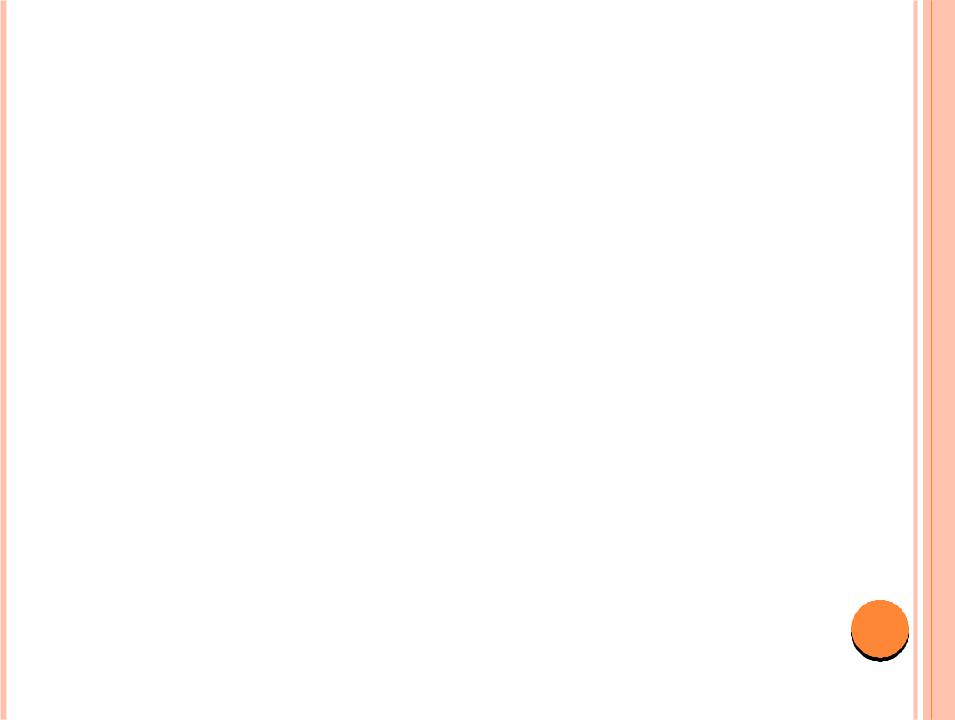
1.WHAT SORT OF ENTITY IS THE PHONEME?
Twaddell (1935)
1) phoneme is a physical reality
“count for practical purposes as if they were one and the same.” JONES (1967: 258)
2) it is a psychological notion
a mental or psychological reality
the phoneme is a constant acoustic and auditory image
(Sommerfelt); a thought sound (Beni); a sound idea (Trubetzkoy); a psychological equivalent of an empirical sound (UÓaszyn);
In modern terms:
phoneme is some sort of mental representation |
11 |
|
TWADDELL criticized this mental phenomenon
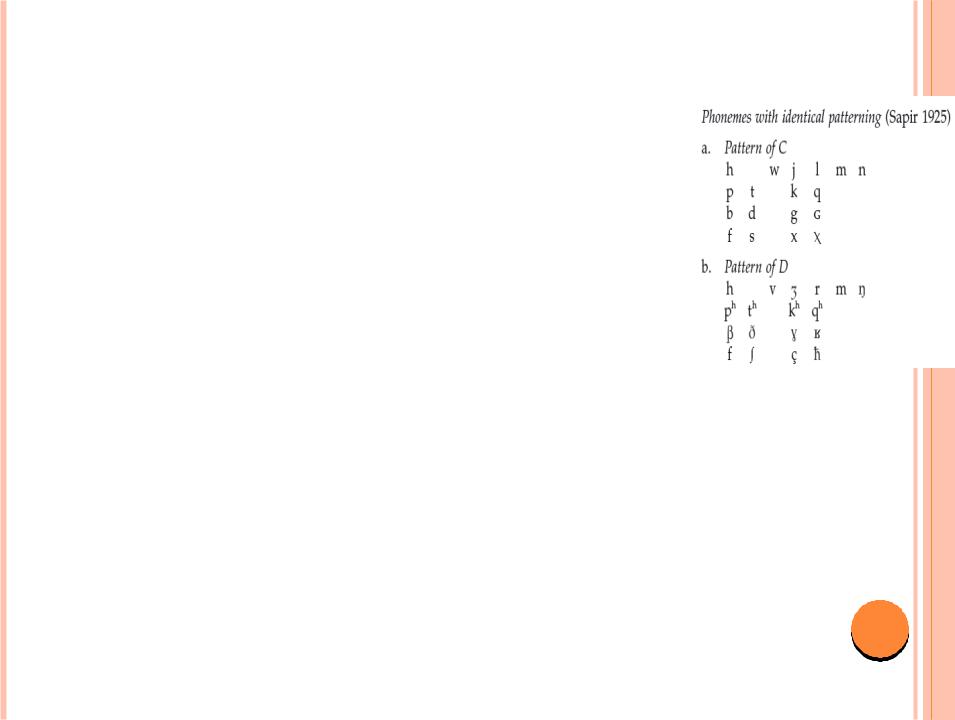
2. WHAT IS THE CONTENT OF THE
PHONEME
What are phonemes made of? How are they represented?
what position specific phoneme takes in the
given phonemic system.
Which phoneme is in the opposition to a specific
Sapir (1925, 1933) Sapir’s “point in the pattern.”
phoneme as a set of contrastively underspecified features
underspecified, in the sense that it consists only of contrastive properties and other features are omitted
This notion further corresponded to the theory of Distinctive feature
this underspecification theory has been proposed under generative |
12 |
phonology under the name Modified Contrastive Specification |
|
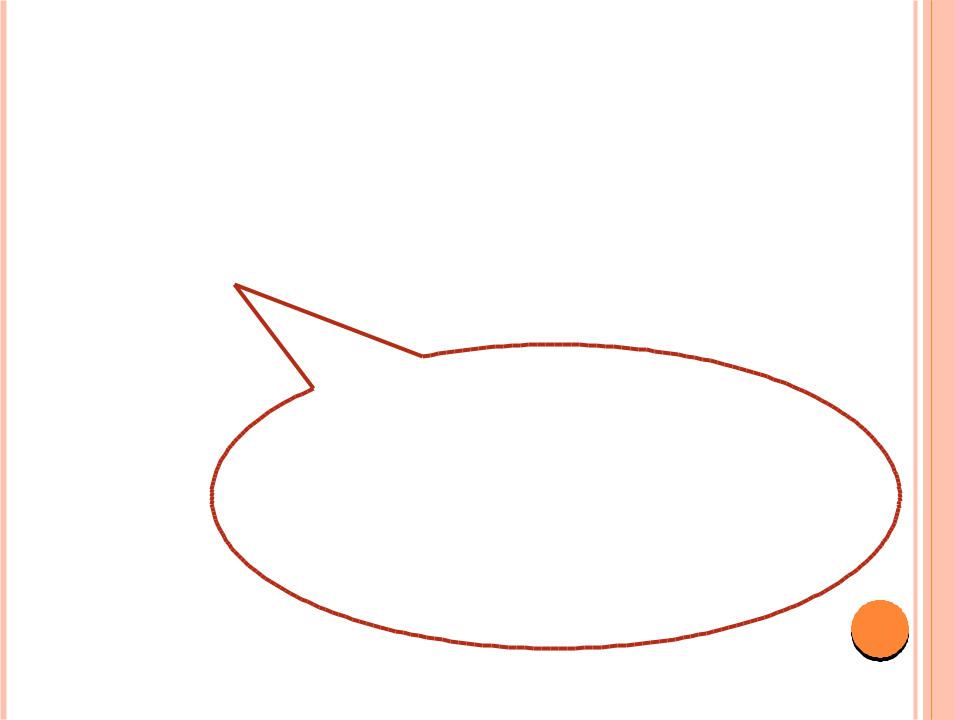
CONTINUE…
Prague School: Phonemic make-up or content
phonemic make-up(Jakobson)
phonemic content of the phoneme (Trubetzkoy)
those properties which are common to all variants of a phoneme
Each phoneme has a definable phonemic content only because the system of distinctive oppositions shows a definite order or structure.
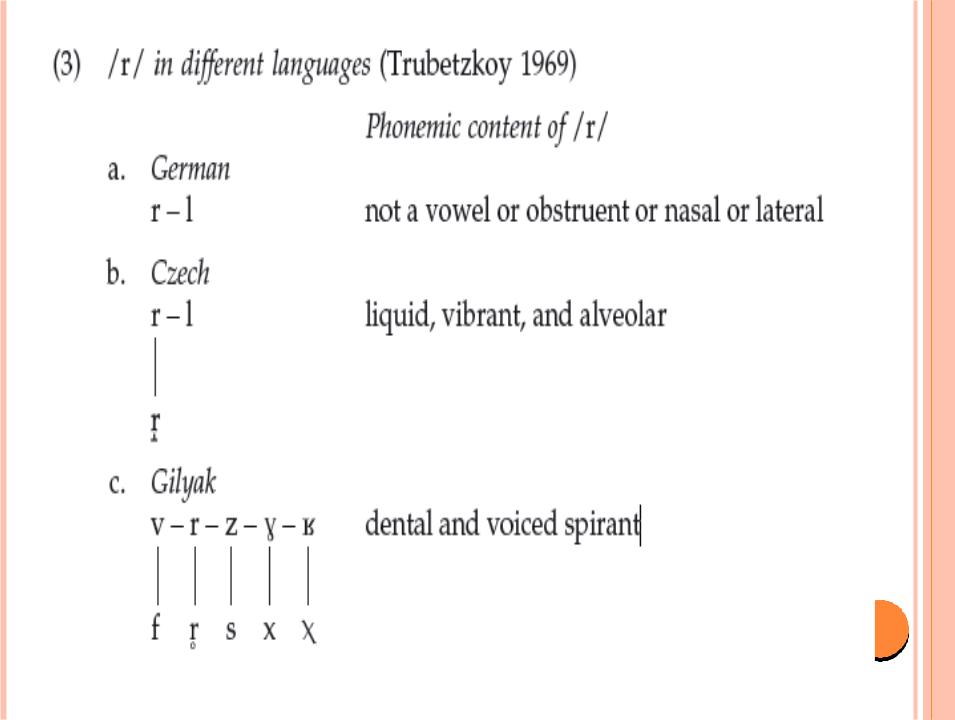
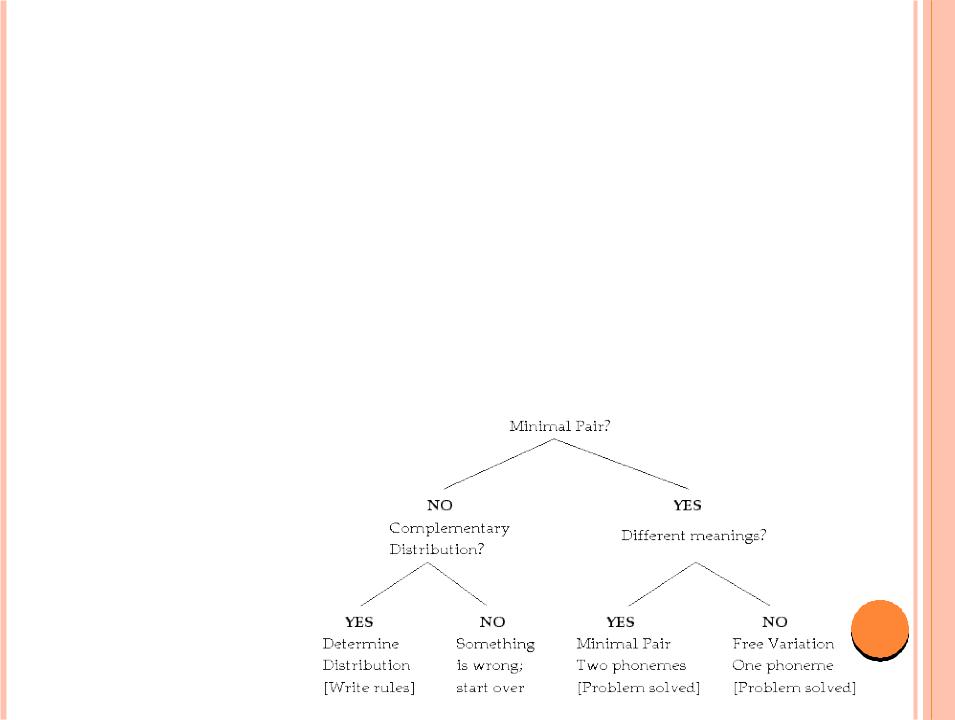
3. HOW DOES ONE IDENTIFY PHONEMES
Practical aspect of phoneme: phonemic analysis
whether a sound is a
single phoneme (/ts/,/nd/, or /oe/)
a sequence of phonemes (/t-s/, /n-d/, or /s-j/).
Minimal pair
Differ in one phonological element (phone, phoneme, toneme or
chroneme )
complementary distribution
Contrastive distribution
Free variation
Mutation methods
15
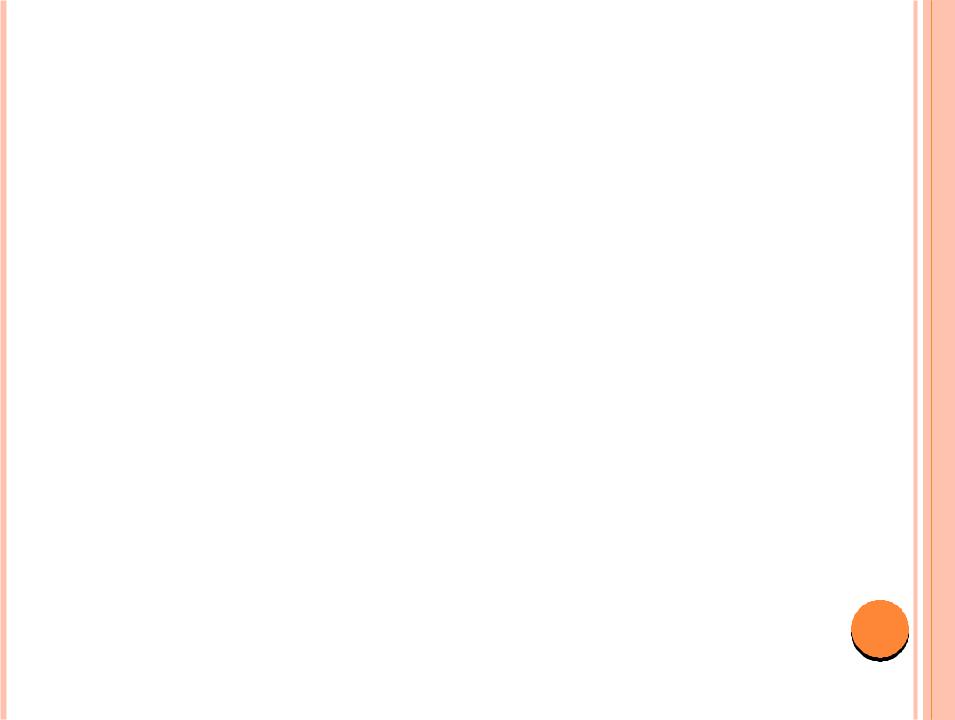
VIEWS OF WHAT THE PHONEME IS
Empiricist notion: Twaddell
the phoneme is a collection of sounds (a fictitious unit )
Mentalist: Chomsky ( realistic view)
the phoneme is the mental category that corresponds to a coherent set of sounds in a language
American structuralist tradition:
a phoneme is defined according to its allophones and environments
generative tradition: |
16 |
|
a phoneme is defined as a set of distinctive features. |
||
|
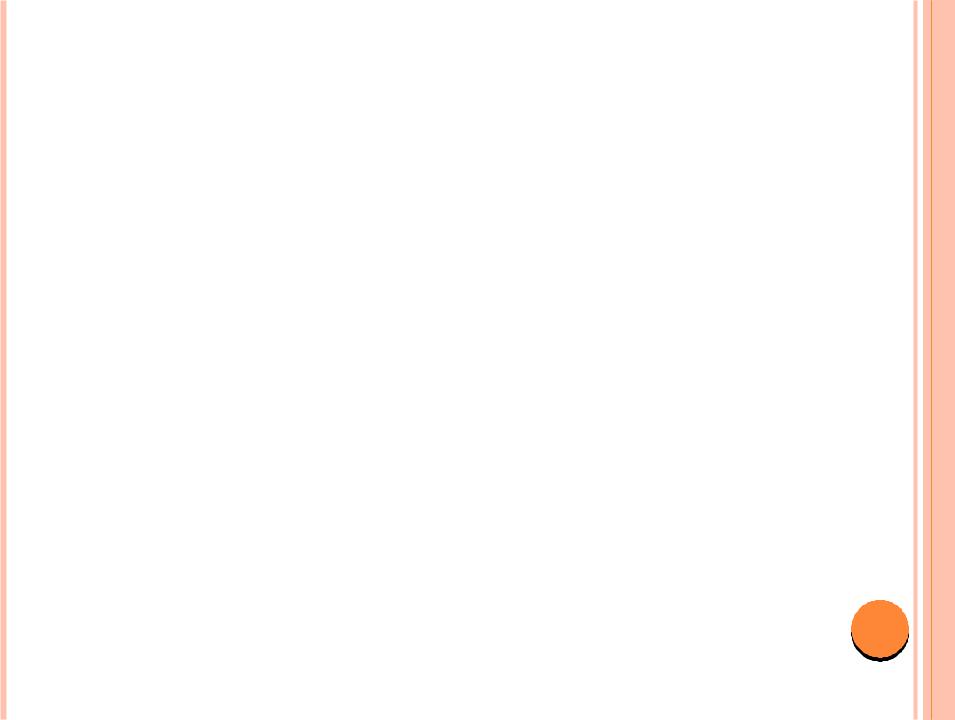
BLOOMFIELD’S PHONEME
“The smallest units which make a difference in meaning”
“A minimum unit of distinctive sound feature” (p. 77).
non-mentalistic unit
He identifies “primary” (segmental sounds) and “secondary” (stress and tone) phonemes according to their function in language (primary: syllable forming; secondary: structuring larger units).
17
Phonemes are defined by their participation in structural sets.
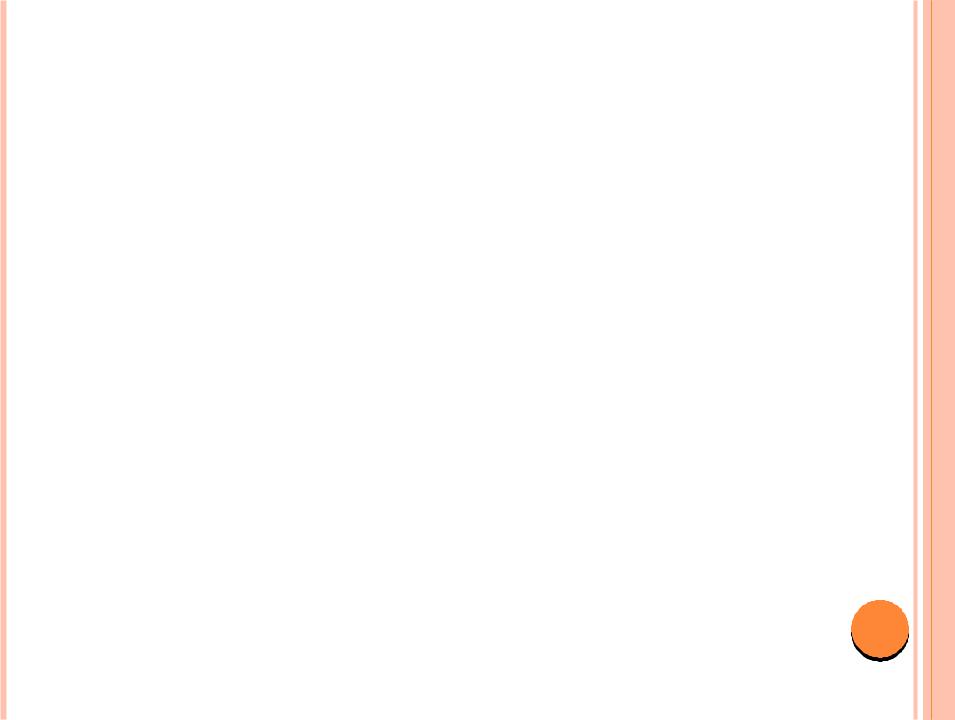
COMMON PHONEMIC RULES
Aspiration [h]
Unreleased Stop [ ̚]
Flap [ɾ]
Dental Consonants [ ]
Velarization [ɫ]
Voicelessness [˚]
Vowel lengthening [׃]
Vowel nasalization [~]
18
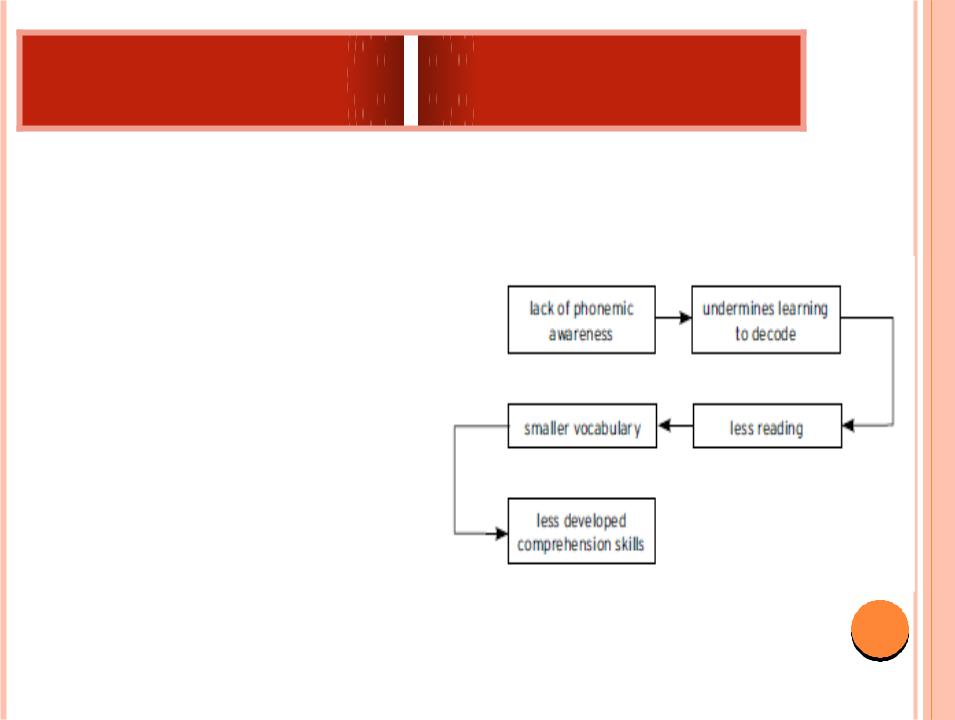
Phonemic  Awareness
Awareness
Phonemic Awareness is a subset of
phonological awareness in which listeners are able to hear, identify and manipulate phonemes, the smallest units of sound that can differentiate meaning.
Separating the spoken word "cat" into three distinct
phonemes,
19
/k/, /æ/, and /t/, requires phonemic awareness skill.
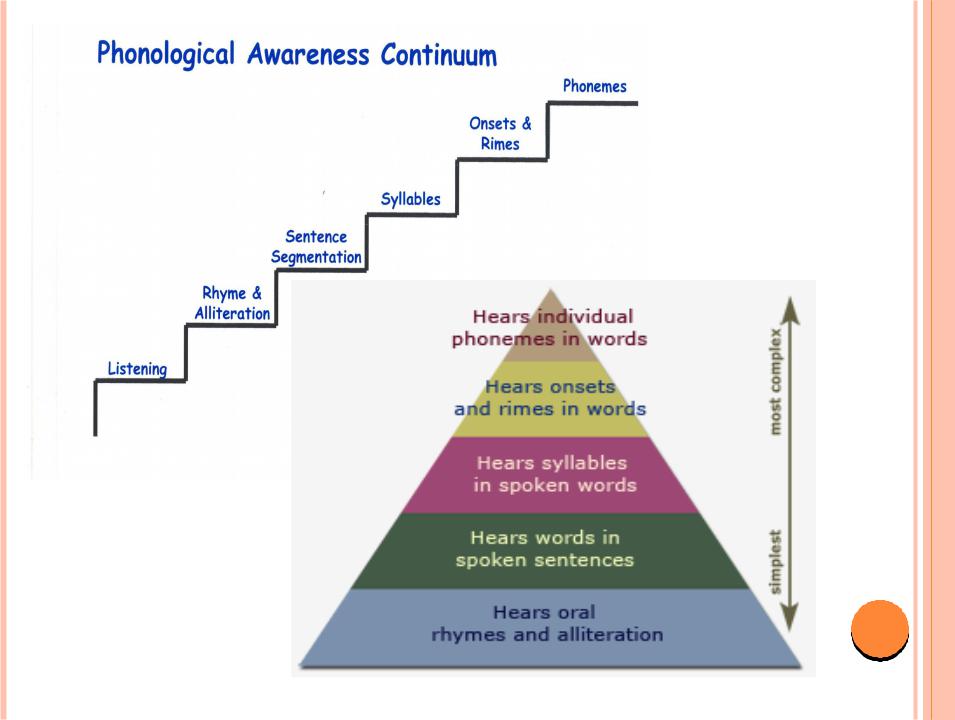
20
